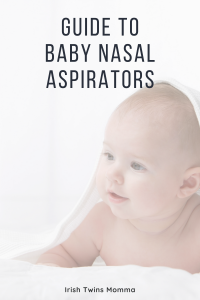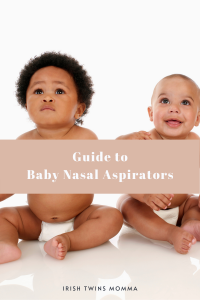This post contains affiliate links. If you click and buy, I may make a commission, at no cost to you. See my disclosure policy for more information.
Your baby is prone to catching viruses all the time resulting in a blocked nose. Get acquainted with baby nose sucker with its list of benefits to help you and the baby remain happy & pink, and away from the doctor. Here is a guide to the tool you must keep at home.
Becoming parents is an experience because it does not consist of a moment but a journey of learning and making mistakes. You are not even aware of many things that could be a problem to a human body until you see your little one struggling. One such unknown problem is a boogie. Yes, the boogie is the topic you have learned to avoid while growing up but it is an important subject in your infant’s life. Why? Because unfortunately, your babies are prone to catching viruses all the time resulting in blocked respiration. That brings us to finding the beneficial tool named the baby nose suction machine. It is so important that most parents recommend the machine as a must for your medical kit. Let us take a look at the basic information about the baby nose sucker before getting to know how to suction an infant’s nose.

What Is A Nose Aspirator?
Also known as the baby nose sucker is a small tool required for babies under the age of 3 months. The tool can be of three types:
The tool helps in sucking the mucus out of an infant’s muzzle with ease. Various brands claim to be the best baby nose aspirator in the market. However, there is not a big difference among any of them. Although, you must pay attention to the type of the baby nose sucker and read the procedure mentioned on the product to see if it’s going to be comfortable to use.
Nose Aspirator Benefits
There are many blogs on the internet that talk about how parents would easily dismiss the process if they could. The reason is that the most common form of a baby nose sucker is one with human suctions which even though is hygienic doesn’t feel nice. But not only are they essential for a kid but also come in better forms for the comfort of parents. Being aware of a baby nasal aspirator can change the entire experience:
- Clears respiratory congestions
- Helps in smooth feeding
- Improves breathing in babies
- Keeps your little one clean and hygienic
How To Use Aspirator For Baby Nose?
Considering that a baby nose sucker can be of three types, we would take up the how-to’s for each of them one by one.
Baby Nose Sucker With Human Suction:
- The tool has a bulb-like structure on one end with a small opening which is for the nasal passage.
- The other end is the pipe that is for the parent or an adult to use.
- Put the bulb end into the nasal passage and suck the air from the other end of the pipe using your mouth.
- The mucus will be sucked out of the nasal passage and get stuck to the tissue in the baby nose sucker.
- Clean the tool and repeat the process with the other hole.
Baby Nose Sucker With Electric Suction:
- Put the sucker into the nasal passage.
- Press the button on the machine to create suction and pull the mucus from the nasal passage.
Baby Nose Sucker With Bulb:
- Squeeze the bulb of the baby nose sucker.
- Put the sucker end in one of the nasal passages.
- Slowly release the bulb to create suction inside the nasal passage and pull the boogie.
- Clean the bulb with tissue and warm water like a dropper before repeating the process.
Baby Nose Suction. How Often To Use?
A baby nose sucker can be used three to four times a day depending on the need. However, one should be careful and not be harsh on the newborn as they can easily get skin irritation. Reduce the frequency if you feel it is not required.
Although a baby nose sucker is a simple tool for relieving your little one from nasal congestions, your kid may not like them at all. If the mucus in the nasal passage is too dry, pulling it out with the sucker will be difficult and hurt the infant. Also, suction in the nasal passage can feel ticklish resulting in a few sneezes and a cranky kid. You can use drops of saline water either bought over-the-counter or made at home to liquefy the mucus. Saline water can be made at home with a cup of warm water and 1/4th teaspoon of salt. Be careful with the temperature before putting 3-4 drops of the solution in the nasal passage using a dropper. Also, hold the head in place for a few minutes to help the solution moisten the mucus. Don’t forget to clean the topical skin with a wet tissue after every use, and be patient, besides being careful.
Do you have a Baby Nose Sucker? Which one do you want to buy or think works the best? Comment below.
Guest Post by Rachel Hudson
Rachel H. is a working mother. Hailing from the country, she believes in taking care of her babies on her own and is very speculative about every product she uses for her kids. It results in a lot of research which she happily shares with mothers around the world.




Leave a Reply